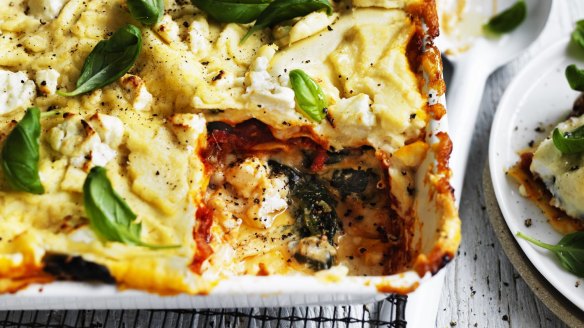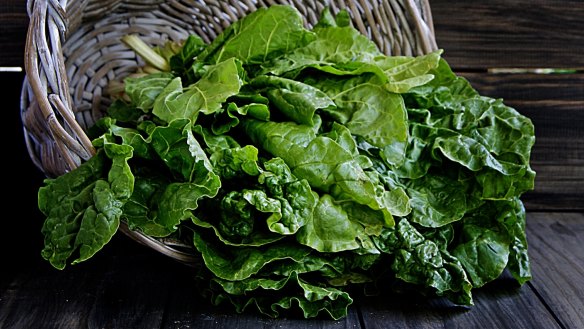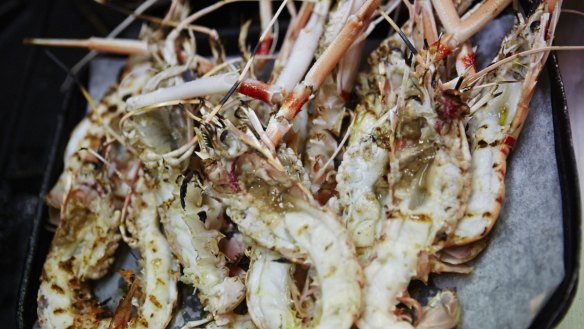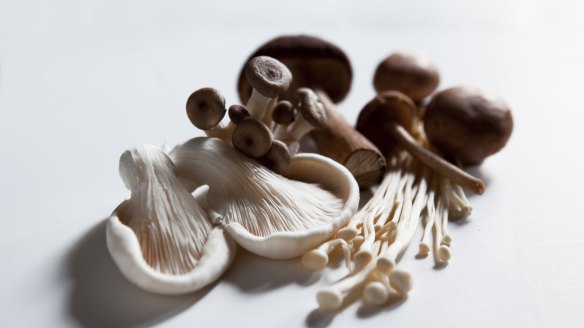Lasagne recipes: 7 handy hacks to reboot your favourite Italian classic

Reinvent your lasagne with a few easy tweaks and reap bellissimo results. Check out these tasty tips from some of our best Italian cuisine chefs.
1. Pimp out the mince
Stuart Toon, head chef and food development at Jamie's Italian, prefers to hard-fry his beef mince.
"Cook the minced beef until crispy. This ensures it soaks up all those lovely lasagne juices when baking in the oven," says Toon.
"And for a luxurious twist on a classic lasagne, add porcini mushrooms, prosciutto di Parma and pan-fried chicken livers, known in Italy as Vincisgrassi (from the Marche region of Italy)."

2. Add spinach to your pasta
"You can't beat homemade pasta with parmigiana reggiano and fresh spinach," says Marcello Arru, chef at Made In Italy, Pyrmont.
"It's a traditional lasagne recipe that originated in the Emilia Romagna region. Just add the fresh spinach and parmigiana reggiano to your fresh homemade pasta when you are making it, and it will create a beautiful aroma and flavour, and give a lovely green colour to your pasta sheets."
3. Switch mince for beef cheek
Fratelli Fresh Melbourne executive chef Timothy Martin cooks gelatinous beef cheeks low and slow before turning them into a lasagne for Fratelli Fresh's new outpost at The Alfred.
"We braise it for about four hours, with the simple addition of tomato, onion and white wine," he says. "The slow cooking is well and truly worth it as it breaks down the fat in the meat, brings out great flavour and results in a really tender ragu."

4. Swap mince for scampi
"My customers at Aperitivo love our scampi lasagne," says Mauro Bianchi, chef at Aperitivo, Leichhardt.
"Chop the scampi into small pieces, lightly pan fry in olive oil and once cooked, glaze with bisque. Alternate lasagne layers with scampi, bechamel sauce, bisque and lightly pan-friend zucchini. Top with pecorino or parmesan cheese."
5. Fold your pasta sheets
"Use a single, long sheet of pasta folded over with your ingredients spooned in between each layer," suggests Nathan Morfett, head chef at Melbourne's Il Solito Posto.
"It looks really cool to have a folded ribbon sheet. Try braising mushrooms and onions with some thyme, a splash of wine and a dash of cream at the end, and then spoon between each fold and top with a sprinkling of gorgonzola."

6. Mix it up with bacon, mushrooms and chunky beef
Monty Koludrovic, executive chef at Icebergs Dining Room and Bar, mixes up his lasagne by adding dry cured bacon to the ragu or baking it into the cheesy top layer.
"Another tip is to substitute half of your meat with slow roasted mushrooms. Mushrooms represent a great option to boost your vegetable intake. They are also a great sustainable food source as we start to see the effect of intensive farming practices on the environment. And they work beautifully to keep moisture in your lasagne," he suggests.
"Always choose a really good braising cut of beef – shin and brisket are good – and ask your butcher to coarsely mince it for you. Using a good trimmed cut with beautiful fat coverage will mean you can braise a chunky, unctuous ragu. Lumps of unbroken, fine, crappy mince are evil, but a ragu made with chunky, juicy, succulent beef is a real winner."
7. Add leek to your bechamel sauce
"My number one tip is to use leek in the bechamel sauce," suggests Peter Werth, head chef at Brisbane's Pane E Vino.
"Just slice the leek and mix in with the sauce. It creams in the sauce as it cooks, adding texture and a rich buttery flavour. You can also add fresh thyme to the bechamel which creates a rich back-end taste with lovely specks of green through the sauce. I also use fresh rosemary in the bolognaise sauce – a must."
The best recipes from Australia's leading chefs straight to your inbox.
Sign up